Rank Family | Suborder Brachycera Scientific name Lauxaniidae Higher classification Lauxanioidea Order Fly | |
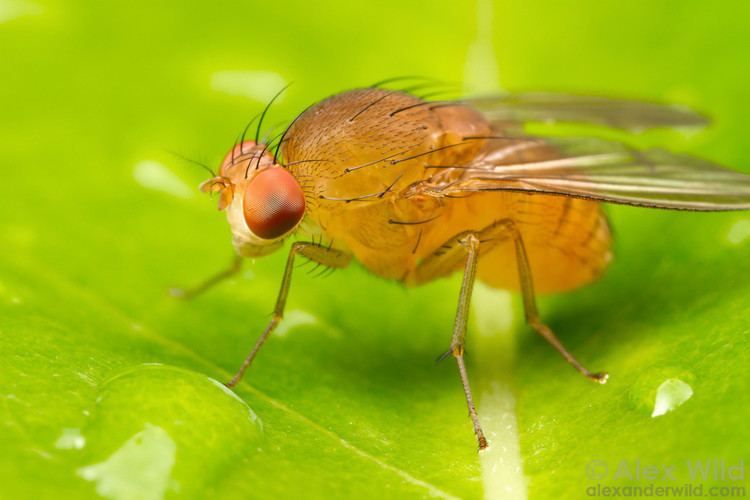 | ||
Lower classifications | ||
Lauxaniid fly lauxaniidae neogriphoneura on window pane
The Lauxaniidae are a family of acalyptrate flies. They generally are small flies (length 7 mm or less) with large compound eyes that often are brightly coloured in life. Many species have variegated patterns on their wings, but in contrast they generally do not have variegated bodies.
Contents
- Lauxaniid fly lauxaniidae neogriphoneura on window pane
- Lauxaniid fly lauxaniidae minettia on grassblade
- Description
- Biology
- Genera
- References
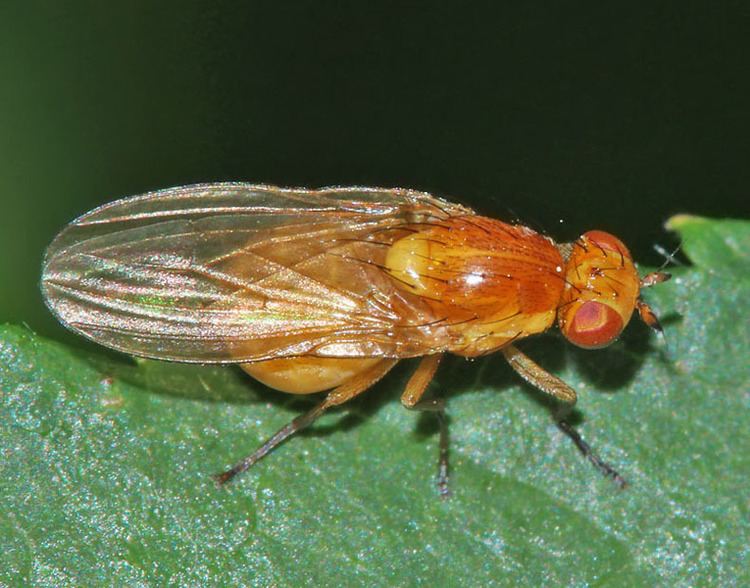
Some 1800 species of Lauxaniidae have been described and they comprise some 126 genera. The family has a cosmopolitan distribution, most of the species occurring in tropical regions of Asia and the Americas; relatively few species occur in Afrotropical regions, and Lauxaniid species diversity declines strongly towards the more temperate regions; for example fewer than 200 European species have been described. Most species inhabit forests, where the adults usually are found sitting on leaves of the understory. They are far less common in open country, such as grassland habitats.
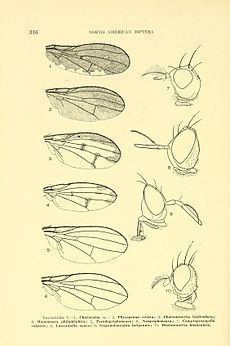
Lauxaniid fly lauxaniidae minettia on grassblade
Description
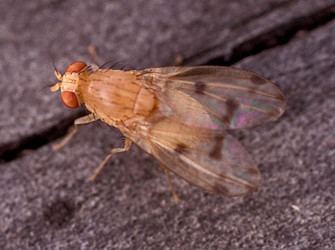
For terms, see Morphology of Diptera
Lauxaniidae are small flies (2–7 mm in length). They are often rather plump, dull, or partly lustrous flies. The body colour varies from yellow to brown or black, or with a combination of these colours. The head is variable in shape, the face projecting or retreating, convex, flat or concave, usually without oral vibrissae (sometimes poorly developed, occasionally strong bristles near the vibrissal angle). The postvertical bristles converge (in rare cases parallel). The frons is wide, with two pairs of frontal bristles, the upper pair of which is always reclinate, the lower pair sometimes decussate. Interfrontal bristles are absent. The ocellar bristles are present or minute. The antennae are variable and the arista is plumose, pubescent to bare. The thorax has bristles, at least behind the suture. The scutellum is usually bare except for the marginal bristles. Propleural bristles are present or absent and one or two sternopleural bristles are seen. Tibiae all have a preapical bristle. The wings are marked or unmarked (in a number of species with spots along the veins). The wing venation is complete and the costa is continuous. The subcosta is entire and ends in the costa. The second basal and anal cells are short and the apical cell usually widely open. The abdomen is oval, rarely elongated.
Biology
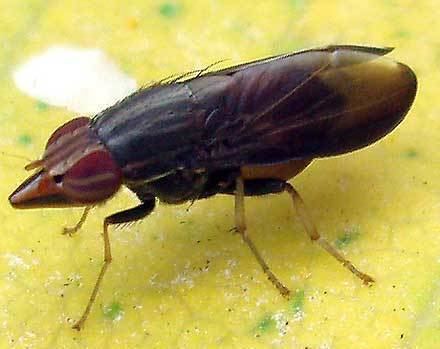
The larvae are mostly saprophagous, feeding in leaf litter, soil, bird nests, etc. Larvae of some mine fallen leaves, others live in rotten wood, and some cause deformation of the flowers and pistils of violets.
Genera

